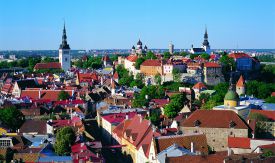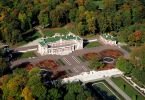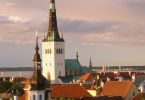
Tallinn Attractions.
Tallinn - Old Town With Old Town Charm
Tallinn's old town belonging to UNESCO's World Heritage List, is a magnnificent blend of medieavel streetscape and modern convenience, with cafes, restaurants, shops and street fairs. All easily accessible inside the impressive city walls. Coubblestones, courtyards and craftsmen. Experience the Middle Ages with a stroll through coubblestoned streets of the Old Town, peeking into side alleys, inner courtyards and artisans` workshops. Tradition – bound, alive and alluring. Traditions like the Oled Town Days and medeavel markets keep the Hanseathic spirit alive in enchanting venues. Tallinners have always enjoyed a hearty meal. Today you can taste a mixture of medieavel atmosphere and modern cuisine. The highly prized value of true craft. The skills of craftsmen have been passed down for centuries. Search for your favorite among workshops, handicraft shops and markets.
Town Hall Square - In Tallinn Attractions.
Tallinn Town Hall - In Old Town
Tallinn's late Gothic Town Hall building is one of the most famed symbols of the city, recognized throughout Estonia as a venerable, unique architectural treasure. The Town Hall was established on the central square, probably at the beginning of 13th century. In 1402-1404, the building was substantially reconstructed. The exterior, as we know dates from this period, and the basic room plan have also been preserved, and it was reconstructed for hosting receptions. The second floor is still the main floor, where the Citizen`s Hall, the Council Hall, a small kitchen and chancery are located and where festive receptions and concerts are held, just as they were in the Medieval days of yore. The three-nave cellar hall is open today for citizens and guests as an exhibit hall.
Viru Gates
The Viru Gates were built in the 14th century, but the towers now remain the only part of what was originally here. The Viru Gates are in the eastern section of the city wall. The main tower of the gates was originally built in 1345-1355. Today, Viru Gate is one of the main entryways in the Town Wall, leading into the Old Town to Viru Street, a main shopping and dining street of the Old Town.
Fat Margareta - In Old Town
The Great Coastal Gate and Fat Margaret's Tower were built as a defense on the seaward side of town, but also with the aim to impress visitors coming from the sea. The Great Coastal Gate, built simultaneously with the city wall, is situated on the northern side of the Old Town, near the harbor. During the reconstruction of the gate in the early 16th century, there was added the cannon tower Fat Margaret. The circle tower, with 155 loopholes, diameter of 25 meters, high of around 20 meters, was built to protect the harbor. It got such name from the fact that it was really the stoutest tower in the city wall. Through history, the cannon tower has also served as a storehouse for gunpowder and weapons, and as a prison. Fat Margaret's Tower now is the Estonian Maritime Museum, with a permanent exhibit of Estonian maritime and fishing history. The viewing platform on the roof presents a lovely view on the Old Town and the bay. Closed on public holidays.
Tallinn's Soviet Legacy
Estonia was occupied by the Soviet Union in 1940, then by Nazi Germany in 1941, and again by the Soviets in 1944. The country remained occupied, forcibly integrated into the USSR, from the end of the war until the country regained its independence in 1991. During that time Soviet rule left indelible marks on Tallin'’s landscape which today left as reminders of the powerful regime that once exercised tight control over each aspect of citizen’s life. They're also fascinating places for foreign guests to visit, especially for those who interested in that chapter of the world’s history. Note that visitors willing to invest the time travel outside Tallinn can see some fascinating remains of Soviet military bases in Naissaar, an island 8.5 km off the coast, and in the port town of Paldiski, 49 km off the capital.
KGB Headquarters - in the Old Town
It's strange, that this ominous-looking building with bricked-up basement windows once was the most scared place in the city. It was here at the headquarters of the NKVD (later renamed the KBG) that perceived enemies of the state were interrogated and then either shot or sent to Siberian work camps. The plaque outside in Estonian reads, "This building housed the organ of repression of the Soviet occupational power. Here began the road to sovereignty for thousands of Estonians." It's interesting to note that the spire of the neighbor 13th-century St. Olav's Church was used by the KGB for sending radio transmissions.
Museum of occupation and fright of freedom
Opened in summer 2003, this modern museum is the first in the national history dedicated to the 1939 - 1991 time period, during which Estonia was briefly occupied by the Germans, and then by the Soviet Union for a long time. Audio-visual displays, photos and sound recordings revive the events of the era, repression and popular resistance, and show how ordinary people got along with the day-to-day realities of this difficult period.
Old Town
The square in front of Tallinn's Town Hall functioned as a marketplace for centuries, dating back to times even before the Town Hall itself was built. Through the years this served as a place of celebrations as well as executions. Today the square remains a cultural focal point for the city. In summer, it's filled with outdoor caf?s and is home to countless open-air concerts, handicraft fairs and medieval markets. In winter, an annual Christmas Market enchants the crowds on the square, as does the town’s Christmas tree (a tradition whose roots stretch back to 1441), which stays up for a month or more. Town Hall Square has also become the traditional centre of the Old Town Days festival, a modern version of a medieval carnival. Traditions from the Middle Ages are kept alive here, including parades, a knights’ tournament, a parrotshooting contest and the election of the May Count.





